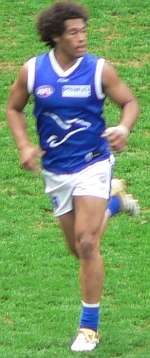Irish immigration to Barbados
| ||||
| Languages | ||||
|---|---|---|---|---|
| Barbadian English, Bajan Creole | ||||
| Religion | ||||
| Christianity | ||||
| Related ethnic groups | ||||
| Afro-Barbadian, English people | ||||
Irish immigration to Barbados dates back to the 1620s, when Irish people began arriving on the island. The majority were emigrants, indentures, and merchants, though with an unknown number of political and convict transportees during the 1650s[1] [2]
History
The Irish settled in Barbados with the English from the 1620s, as emigrants, merchants and indentured servants. While Irish indentured servants are often conflated with African chattel slaves (see Irish slaves myth), this is incorrect, as chattel slavery was a different legal category based on race, and did not cease after a period of time (usually 7 years).[3]
Though thousands of Irish convicts and military prisoners arrived in the 1650s, the majority of Irish people in Barbados both before and after this entered into indenture contracts voluntarily: "Indentured servitude appeared in Virginia by 1620. Initially a device used to transport European workers to the New World, over time servitude dwindled as black slavery grew in importance in the British colonies."[4]
Demography
Currently, Barbadian descendants of the Irish are called redlegs. This community has been endogamous, and now numbers only about four hundred people. Most live in poverty and are prey to infections and diseases. Often, they have a poor diet and lack of dental care. Furthermore, hemophilia caused diseases and premature deaths in the community, and excess sugar foods consumed by the community has aroused a high rate of diabetes, which has extended blindness among many of them. Moreover, school absenteeism, poor health, the mixture between members of the same family (which causes severe disease in their descendants) and the poverty of the community, reinforced by the possession of small land, shortage of employment opportunities and maintenance of large families (and therefore greater food shortages for each of its members), have adversely affected their presence on the island. Today, redlegs are characterized by anomalies and difficulties to survive on the island.[5][6]
See also
References
- ↑ https://www.historyireland.com/early-modern-history-1500-1700/shipped-for-the-barbadoes-cromwell-and-irish-migration-to-the-caribbean/
- ↑ Costello, Norma. "Black Lives Matter and the 'Irish slave' myth". www.aljazeera.com. Retrieved 2017-08-30.
- ↑ Stack, Liam (2017-03-17). "Debunking a Myth: The Irish Were Not Slaves, Too". The New York Times. ISSN 0362-4331. Retrieved 2018-03-21.
- ↑ Galenson, David (2011). "The Rise and Fall of Indentured Servitude in the Americas: An Economic Analysis" (PDF). Cambridge University Press. Retrieved August 29, 2017.
- ↑ Jolley, Sheena (19 December 2009). "Remnants of an indentured people". The Irish Times. Retrieved 26 October 2017.
- ↑ Jolley, Sheena (October–November 2015). "The Irish of Barbados (Photos)". Irish America. Retrieved 26 October 2017.
.png)

